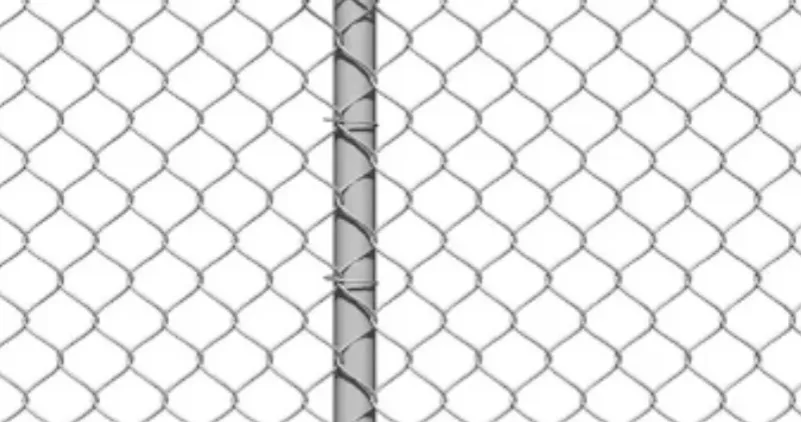-
 Phone:
Phone: -
 Email:
Email:

Exploring the Design and Applications of Hexagonal Mesh Wire Structures in Various Industries
The Versatility of Hexagonal Mesh Wire
Hexagonal mesh wire is an innovative and functional material that has garnered increasing attention in various industries thanks to its unique geometric design and practical applications. Composed of interconnected hexagonal shapes, this mesh offers a myriad of benefits, making it ideal for uses in construction, agriculture, architecture, and more.
Design and Functionality
At its core, hexagonal mesh wire combines strength with flexibility. The hexagonal pattern allows for enhanced structural integrity, distributing forces evenly across the mesh. This design minimizes the risk of deformation under stress, making it suitable for applications requiring durable and resilient materials. The open design of the mesh also facilitates good airflow and drainage, making it a preferred choice for several environmental applications.
Applications in Construction and Industrial Sectors
In the construction industry, hexagonal mesh wire is commonly utilized for reinforcing concrete and as a protective barrier. Its robust structure enhances the durability of concrete structures, while the hexagonal openings allow for concrete to flow through, ensuring a strong bond. This mesh type is also used in retaining walls, steep slopes, and embankments, where it provides stability and prevents soil erosion.
Moreover, hexagonal mesh wire is integral to the manufacturing of welded wire fabric and cages. It is extremely useful in creating rebar cages for foundations and other structural components. Industries that rely on heavy-duty applications, such as mining and tunneling, also favor this mesh due to its resistance to wear and tear.
Agricultural Uses
Beyond construction, hexagonal mesh wire plays a significant role in agriculture. It is widely used in the form of fencing to protect crops from wildlife and livestock. The design not only keeps unwanted animals out but also allows small animals, insects, and air to pass through, creating a balanced ecosystem.
hexagonal mesh wire

Hexagonal mesh is also employed in soil erosion control projects. It can be laid over slopes and hillsides to stabilize soil, especially in areas susceptible to landslides. This protective layer prevents the washing away of soil while promoting the growth of vegetation, which in turn enhances the landscape's ecological balance.
Architectural Applications
In the realm of architecture, hexagonal mesh wire is making waves as a design element. Its aesthetic appeal is notable, with many modern buildings incorporating this material as a facade or decorative feature. The geometric pattern not only adds a unique visual element but also contributes to energy efficiency by aiding in thermal regulation and natural ventilation within buildings.
Additionally, hexagonal mesh is used in the creation of vibrant public spaces, where it may serve as a transformative element in urban design, parks, and recreational areas. Its lightweight nature and adaptability make it ideal for artistic arrays and functional structures such as seating, walls, and partitions.
Environmental Sustainability
An often overlooked benefit of hexagonal mesh wire is its potential for sustainability. Made from recyclable materials, it can be reused and repurposed in various applications. Its longevity and resistance to environmental factors mean that products made from hexagonal mesh wire can have extended life spans, reducing waste and promoting sustainable practices.
Conclusion
Hexagonal mesh wire stands out as a versatile and practical material with applications spanning multiple industries. Its unique design brings about numerous benefits, including enhanced strength, flexibility, and aesthetic appeal. Whether used in construction, agriculture, architecture, or environmental conservation, hexagonal mesh wire is an indispensable tool for contemporary innovations and sustainable practices. As industries continue to explore its potential, the future of hexagonal mesh wire looks promising, leading to even more creative solutions to modern challenges.
-
Wire Mesh for Every Need: A Practical SolutionNewsJul.25,2025
-
Steel Fences: Durable, Secure, and Stylish OptionsNewsJul.25,2025
-
Roll Top Fencing: A Smart Solution for Safety and SecurityNewsJul.25,2025
-
Cattle Farm Fencing Solutions for Maximum SecurityNewsJul.25,2025
-
Affordable Iron Binding Wire SolutionsNewsJul.25,2025
-
Affordable Galvanized Wire SolutionsNewsJul.25,2025
-
Wire Hanger Recycling IdeasNewsJul.25,2025








